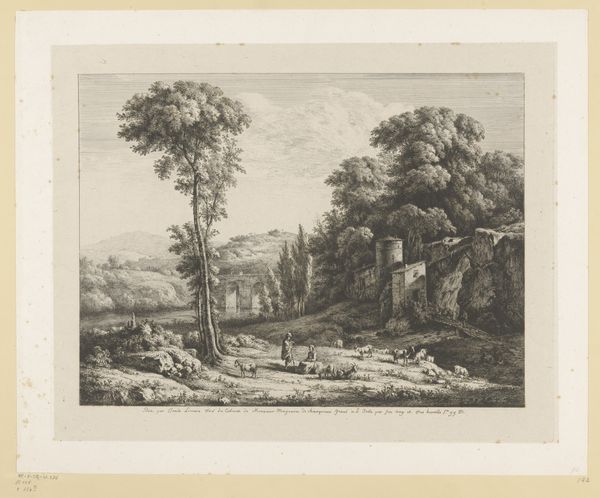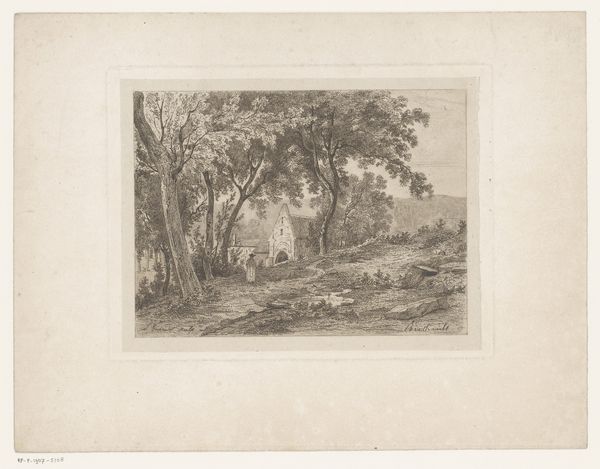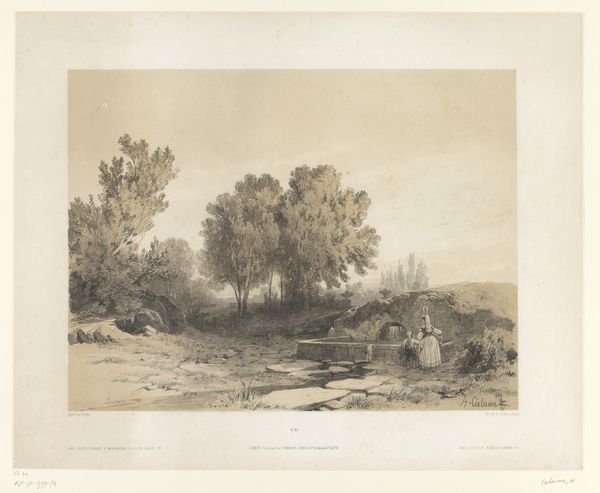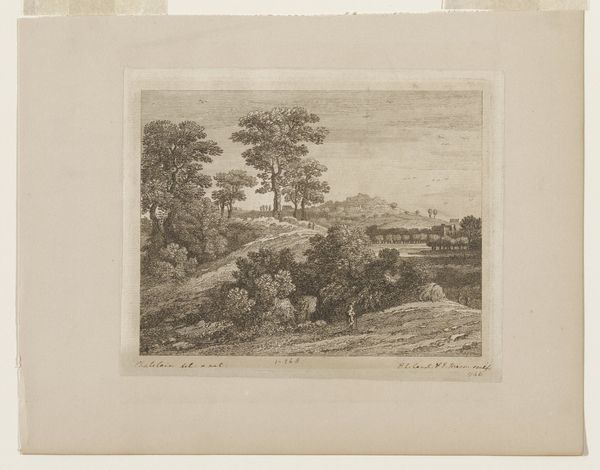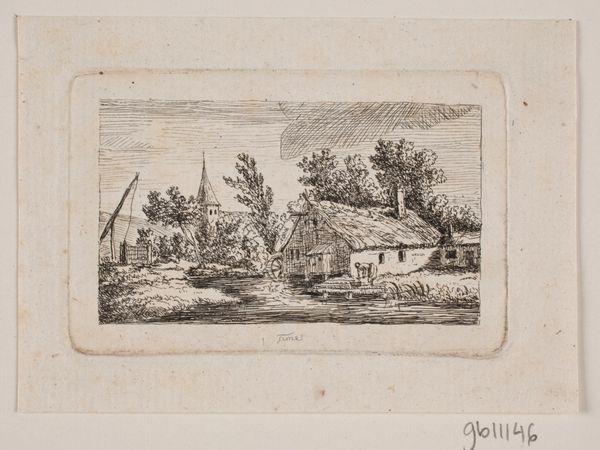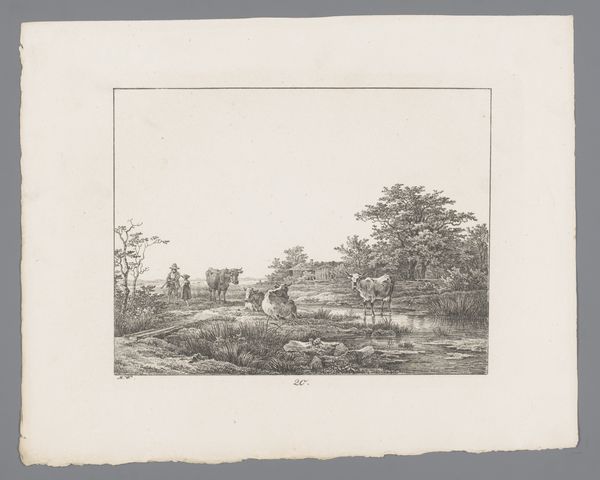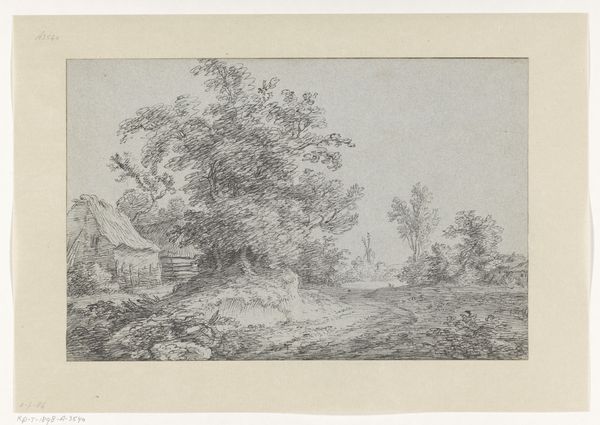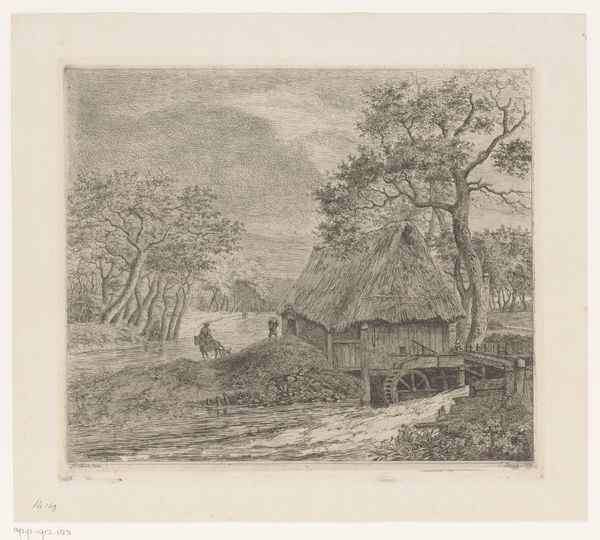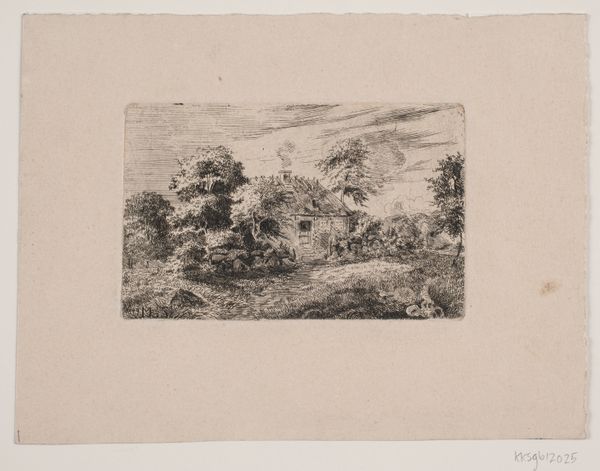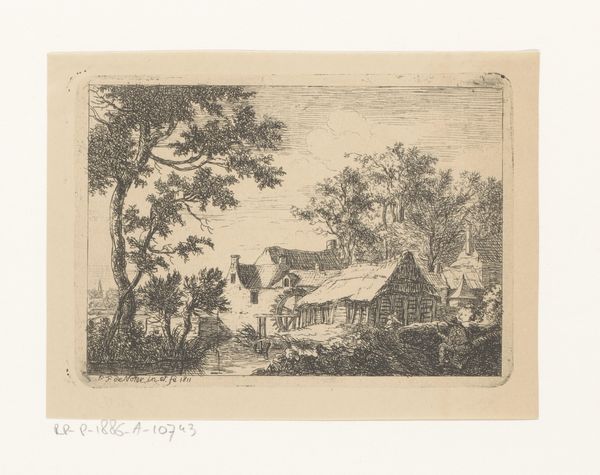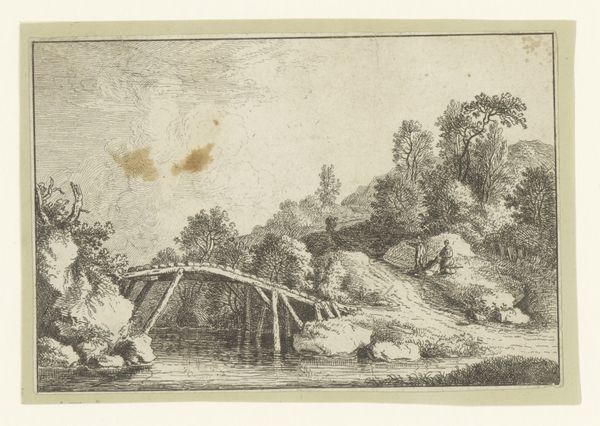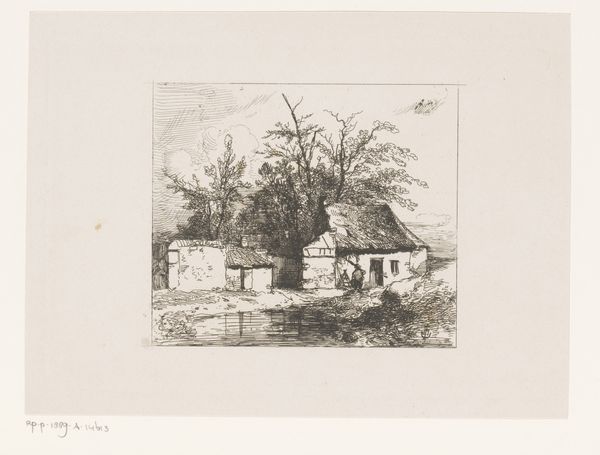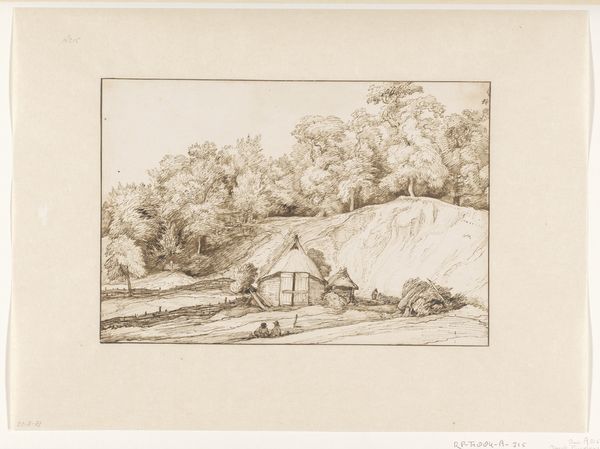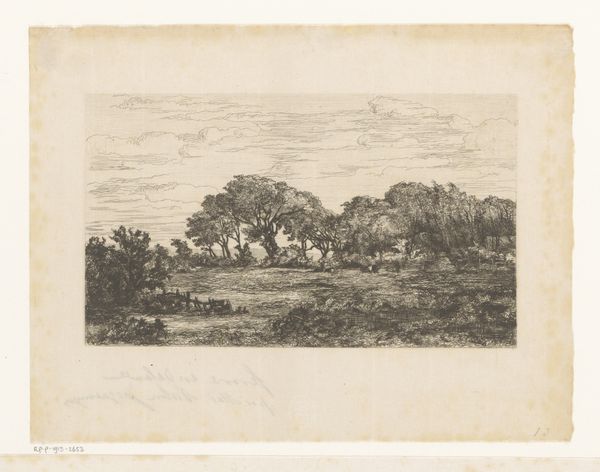
drawing, print, etching
#
drawing
#
neoclacissism
# print
#
etching
#
landscape
Dimensions: height 162 mm, width 201 mm
Copyright: Rijks Museum: Open Domain
Editor: This is Jean Jacques de Boissieu’s "Landscape with figures near a hut," an etching from 1803. I am struck by how simple and almost primitive the lines seem for such a pastoral scene. What can you tell me about it? Curator: It's important to consider etching, the means of its production, in relation to the final image and its market. Here, Boissieu utilizes etching to render a rustic scene, blurring boundaries between art and the representation of labor. How does the artist’s chosen technique impact our understanding of the subject matter? Editor: I suppose the fact that it’s a print implies wider distribution. The materials of the hut also stand out. It looks so fragile, like it was quickly assembled with what was available. Curator: Exactly. Boissieu draws attention to the conditions of rural life through careful detailing of material conditions. Consider also the historical context. This piece comes at a time of growing industrialization; what could this suggest? Editor: Maybe it romanticizes a simpler way of life, before factories dominated? Almost as a commodity for the emerging bourgeoisie, a piece of nostalgic decor? Curator: Precisely. Furthermore, reflect on how labor is represented in relation to nature. The figures almost seem to blend into the landscape. Editor: Right, and the figures almost fade into the landscape, showing the integration of human labour and raw environment. I hadn’t considered the work as a comment on early capitalism! Thanks, I’m definitely seeing it in a different light. Curator: Reflecting on the methods used gives a renewed understanding of its artistic and social context.
Comments
No comments
Be the first to comment and join the conversation on the ultimate creative platform.
